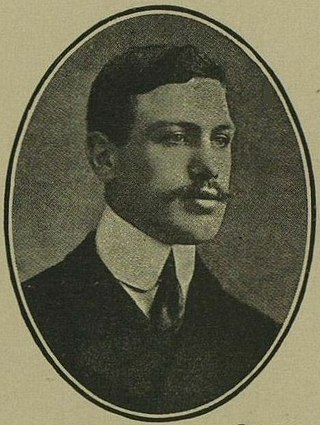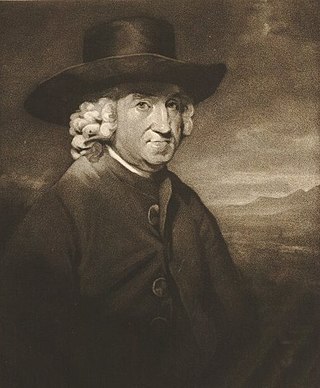Related Research Articles

Richard Laurence Millington Synge FRS FRSE FRIC FRSC MRIA was a British biochemist, and shared the 1952 Nobel Prize in Chemistry for the invention of partition chromatography with Archer Martin.

William Roxburgh FRSE FRCPE FLS was a Scottish surgeon and botanist who worked extensively in India, describing species and working on economic botany. He is known as the founding father of Indian botany. He published numerous works on Indian botany, illustrated by careful drawings made by Indian artists and accompanied by taxonomic descriptions of many plant species. Apart from the numerous species that he named, many species were named in his honour by his collaborators.

Albert Edward Harry Meyer Archibald Primrose, 6th Earl of Rosebery, 2nd Earl of Midlothian,, styled Lord Dalmeny until 1929, was a British liberal politician who briefly served as Secretary of State for Scotland in 1945. He was the Member of Parliament for Midlothian from 1906 to 1910. He became the Earl of Rosebery and Midlothian in 1929 and was thus a member of the House of Lords until his death.

William Tytler WS FRSE (1711–1792) was a Scottish lawyer, known as a historical writer. He wrote An Inquiry into the Evidence against Mary Queen of Scots, against the views of William Robertson. He discovered the manuscript the "Kingis Quhair", a poem of James I of Scotland. In 1783 he was one of the joint founders of the Royal Society of Edinburgh.

Auckland Campbell Geddes, 1st Baron Geddes, was a British academic, soldier, politician and diplomat. He was a member of David Lloyd George's coalition government during the First World War and also served as Ambassador to the United States.

Brigadier-General Sir Alexander Gibb was a Scottish civil engineer. After serving as Civil Engineer-in-Chief to the Admiralty and Director-General of Civil Engineering at the Ministry of Transport, he established the engineering consultancy firm Sir Alexander Gibb & Partners.

Sir William MacTaggart, (1903–1981) was a Scottish painter known for his landscapes of East Lothian, France, Norway and elsewhere. He is sometimes called William MacTaggart the Younger to distinguish him from his grandfather, the painter William McTaggart.

General Robert Melvill LLD was a Scottish soldier in the British Army, antiquary, botanist and inventor.
Alexander Fleck, 1st Baron Fleck was a British industrial chemist.

James Hope-Johnstone, 3rd Earl of Hopetoun FRSE, known as Viscount Aithrie from 1742 to 1781, was a Scottish Representative Peer and military leader.
Professor Andrew Fyfe FRSE FRCSE PRSSA PRMS was a Scottish surgeon and chemist. Following early studies on Fox Talbot's newly created photographic techniques he was one of the first (1839) to work out the theory behind positive rather than negative prints. He had an amateur interest in photography but appears not to have pursued his own theories and limited his experiments to ferns lying on chemical papers.
William Arthur FRSE MC was a Scottish mathematician.

Augustus Simon Frazer KCB FRS, commanded the artillery at the British invasions of the Río de la Plata (1807) and the Royal Horse Artillery on Wellington's staff in the Peninsular War, and later during the Waterloo Campaign.
John Alexander Inglis of Auchendinny and Redhall FRSE KC LLB was a Scottish landowner, advocate and historian. He specialised in family histories of Scotland’s gentry.
David Dale Logan was a distinguished Scottish physician, soldier and medical author. He was an expert on gas warfare, and, as an odd attachment to a medical training, was an expert mining engineer.
Major-General Norman MacLeod of MacLeod FRS FRSE was a Scottish soldier and politician, who served as MP for Inverness-shire 1790 to 1796, a seat previously held by his grandfather, Norman MacLeod. Thomas Pennant called him “unusually intelligent”. As an MP, he was one of the early campaigners (1796) to abolish the slave trade. He was the 23rd Chief of Clan MacLeod.
Alfred George Nash FRSE was a Jamaican civil engineer of Scots descent who held several legislative roles there.
John Peter Desmaretz was a British civil and military engineer. His projects included a new entrance to Shoreham-by-Sea's harbour (1753), powder and horse mills in Faversham (1755-1763) and for gun batteries at vulnerable points on the coasts of Kent and Sussex (1759). He also advised on modifications to Edward Gatton's plans for Ramsgate harbour (1749-1772).
Colonel Matthew Stewart FRSE (1784–1851) was son of Dugald Stewart and a 19th-century Scottish army officer.

Lieutenant-Colonel Patrick Duff Tytler FRSE (1760–1849) was an 18th-century Scottish soldier who oversaw Stirling Castle.
References
- ↑ Waterston, Charles D; Macmillan Shearer, A (July 2006). Former Fellows of the Royal Society of Edinburgh 1783-2002: Biographical Index (PDF). Vol. I. Edinburgh: The Royal Society of Edinburgh. ISBN 9780902198845 . Retrieved 28 December 2011.
- ↑ Biographical Index of Former Fellows of the Royal Society of Edinburgh 1783–2002 (PDF). The Royal Society of Edinburgh. July 2006. ISBN 0-902-198-84-X. Archived from the original (PDF) on 24 January 2013. Retrieved 7 June 2016.
- ↑ Edinburgh and Leith Post Office Directory 1784-94
- ↑ Biographical Index of Former Fellows of the Royal Society of Edinburgh 1783–2002 (PDF). The Royal Society of Edinburgh. July 2006. ISBN 0-902-198-84-X. Archived from the original (PDF) on 24 January 2013. Retrieved 7 June 2016.
![]() This article incorporates text from a publication now in the public domain : "Frazer, Andrew". Dictionary of National Biography . London: Smith, Elder & Co. 1885–1900.
This article incorporates text from a publication now in the public domain : "Frazer, Andrew". Dictionary of National Biography . London: Smith, Elder & Co. 1885–1900.